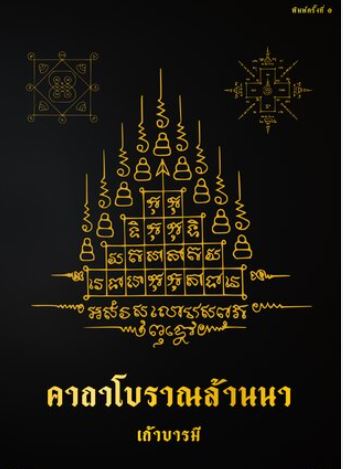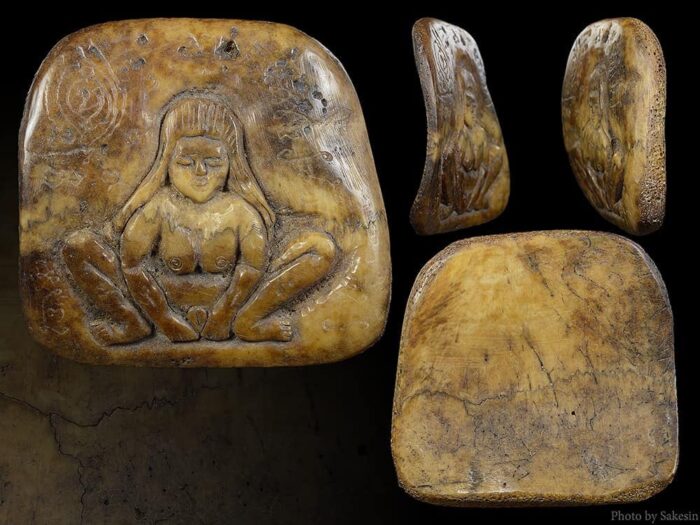The Thai Lanna culture and the tribes who belong to it, is a rich and ancient culture whose origins are lost in the ancient past, whose roots are woven from the traditions, beliefs, and practices of the diverse ethnic groups that have inhabited the northern region of Thailand for centuries. Originating from the ancient kingdom of Lanna, which flourished from the 13th to the 18th century, this culture is characterized by its unique blend of indigenous animist beliefs, Buddhist spirituality, and influences from neighboring cultures such as Burma, China, and Laos.
Origins of Thai Lanna Culture
The roots of Thai Lanna culture can be traced back to the establishment of the Lanna kingdom in the 13th century by King Mengrai. This kingdom, centered in the city of Chiang Mai, flourished as a major center of trade and culture in Southeast Asia. Under the patronage of the Lanna rulers, the region experienced a golden age of art, literature, and religious scholarship. This pivotal moment in history marked the beginning of a flourishing era for the northern region of Thailand, with Chiang Mai emerging as the heart of this vibrant kingdom.

Yant with Kata Boran (Sacred Geometry Spell with Ancient Inscriptions of Incantations) of the Lanna Lineage (however, this exhibit uses Khom Khmer Script, Not Tai Yai Lanna)
King Mengrai’s vision and leadership laid the foundation for a society that thrived on both economic prosperity and cultural richness. With its strategic location at the crossroads of major trade routes, Chiang Mai became a bustling hub of commerce, facilitating the exchange of goods and ideas across Southeast Asia.
Under the patronage of the Lanna rulers, the region experienced a renaissance of sorts, witnessing unprecedented growth in art, literature, and religious scholarship. Artists and artisans flourished, creating masterpieces of architecture, sculpture, and painting that still stand as testaments to the kingdom’s creative brilliance.
Literature also flourished during this golden age, with poets and writers producing works that celebrated the beauty of Lanna culture and explored profound spiritual themes. Religious scholarship thrived as well, with Buddhist monasteries serving as centers of learning and enlightenment, attracting scholars and practitioners from far and wide.
The Lanna rulers’ patronage of the arts and culture not only elevated the kingdom’s prestige but also fostered a sense of unity and pride among its people. The vibrant tapestry of Lanna culture, with its unique blend of indigenous traditions, Buddhist spirituality, and influences from neighboring regions, became a source of identity and inspiration for generations to come.
So in part, the most important documented origins of Thai Lanna culture are rooted in the vision and legacy of King Mengrai and the Lanna rulers who followed, whose patronage and support cultivated an environment where creativity, intellect, and spirituality could flourish, leaving an indelible mark on the history and heritage of northern Thailand.
Animist Beliefs in Thailand
Animism forms the bedrock of traditional Thai beliefs, predating the arrival of Buddhism in the region. Animism holds that spirits inhabit every aspect of the natural world, from trees and rivers to mountains and ancestral homes. These spirits, known as phi, are believed to influence daily life and must be appeased through rituals and offerings to ensure harmony and prosperity.
Magical, Spiritual, and Superstitious Beliefs
Magic and spirituality play a prominent role in Thai Lanna culture, intertwining with animist beliefs to create a complex tapestry of supernatural practices. Rituals and ceremonies are conducted to invoke the protection of ancestral spirits, seek guidance from divine entities, and harness the forces of nature for healing and prosperity.
Religious Beliefs of the Northern Hilltribe People
The northern hilltribe people, consisting of diverse ethnic groups such as the Karen, Hmong, Akha, and Lisu, have their own unique religious beliefs and practices that are deeply rooted in animism and shamanism. While many have adopted elements of Buddhism introduced by Thai rulers, their indigenous spiritual traditions continue to shape their worldview and way of life.
Intertwinement with Occult Practices
The northern hilltribe people have a long-standing tradition of engaging in occult practices, including divination, spirit possession, and the use of magical charms and amulets. These practices are often passed down through oral tradition and are central to their cultural identity and sense of community. The Thai Lanna culture shows the enduring resilience and adaptability of deep and mysterious, and ancient of beliefs the people who have inhabited the northern region of Thailand for centuries. Rooted in animism, infused with Buddhist spirituality, and enriched by diverse cultural influences, it continues to evolve and thrive in the modern world while preserving the rich tapestry of traditions that define it.
The Lanna culture of Thailand, a thriving amalgamation of indigenous customs, spiritual values, and external influences, is deeply entrenched in the northern regions of Thailand. This culture traces its origins to the historic Lanna kingdom, which prospered from the 13th to the 18th century, with Chiang Mai as its cultural and commercial hub. The Lanna kingdom’s patronage fostered a golden age of artistic, literary, and religious scholarship.
The Thai Lanna community, and in particular, the Hilltribe Peoples, follow Animism, a belief system that predates Buddhism and has significantly influenced traditional Thai religious practices. Animism posits that spirits reside in all natural elements, including rivers, trees, and ancestral homes. These spirits, known as phi, are believed to have a profound impact on daily life and are said to require regular rituals and offerings to ensure harmony and prosperity. By appeasing these spirits, the Hilltribe Peoples aim to maintain a balanced relationship with their environment and ancestors.
Magic and spirituality are integral to Thai Lanna culture, intertwining with animism to create a complex web of supernatural practices. Ceremonies and rituals are performed to solicit the protection of ancestral spirits, seek counsel from divine entities, and harness the natural elements for healing and prosperity.
The religious practices of the ethnic groups residing in the northern hilltribes, including the Karen, Hmong, Akha, and Lisu, are a fascinating reflection of their cultural identity. These practices are characterized by a unique blend of animism, shamanism, and Buddhism, each of which plays a significant role in shaping the worldview and lifestyle of these communities. Despite the adoption of Buddhist elements, the indigenous spiritual traditions of these groups continue to hold immense importance. These traditions have been carefully preserved and passed down through generations, serving as the foundation for the hilltribe people’s understanding of the world and their place in it. The continuation of these traditions is revelatory of the resilience and adaptability of these communities, as they find ways to maintain their cultural heritage while also incorporating external influences.
The hilltribe people have a rich tradition of engaging in occult practices, including divination, spirit possession, and the use of magical charms and amulets. These practices, often orally transmitted, are central to their cultural identity and community cohesion.
The Lanna culture of Thailand is a thriving amalgamation of indigenous customs, spiritual values, and external influences, deeply entrenched in the northern regions of the country. This culture traces its origins back to the historic Lanna kingdom, which flourished from the 13th to the 18th century, with Chiang Mai serving as its cultural and commercial hub. The Lanna kingdom’s patronage fostered a golden age of artistic, literary, and religious scholarship, making significant contributions to the rich cultural tapestry of Thailand. At the heart of traditional Thai beliefs lies Animism, an indigenous belief system that predates Buddhism. This philosophy posits that spirits reside in all elements of the natural world, from rivers and trees to ancestral homes.
These spirits, known as phi, are believed to impact daily life and must be propitiated through rituals and offerings to ensure harmony and prosperity. Magic and spirituality are integral to Thai Lanna culture, intertwining with animism to create a complex web of supernatural practices. Ceremonies and rituals in Lanna culture serve multiple purposes. They are performed to solicit the protection of ancestral spirits, seek counsel from divine entities, and harness the natural elements for healing and prosperity. The religious practices of the northern hilltribe people, encompassing ethnic groups such as the Karen, Hmong, Akha, and Lisu, are characterized by their unique blend of animism, shamanism, and Buddhism. Despite the adoption of Buddhist elements, their indigenous spiritual traditions continue to shape their worldview and lifestyle.
The hilltribe people have a rich tradition of engaging in occult practices, including divination, spirit possession, and the use of magical charms and amulets. These practices, often orally transmitted, are central to their cultural identity and community cohesion. They are not merely superstitions but are deeply intertwined with their daily lives, guiding their decisions and actions in a deeply spiritual and interconnected world.
